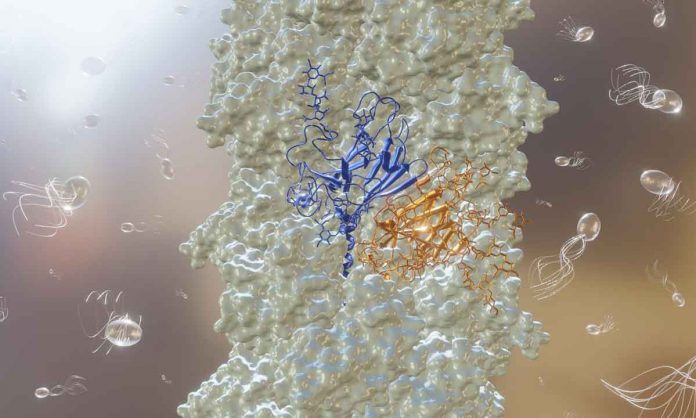University of Exeter scientists have discovered new information about the tiny propellers. These tiny propellers have been used by single-cell organisms called archaea.
Archaea are found in a vast range of habitats, like bacteria. These includes human bodies. But unlike bacteria they do not cause disease.
Some archaea propel themselves to incredible speeds. They rotate a spiral-shaped filament called an archaellum.
Scientists used a powerful cryo-electron microscope. They examined this closer than ever before.
University of Regensburg scientists have focused on Methanocaldococcus villosus. This is a species found near underwater volcanoes off Iceland. There water temperatures can reach about 80°C.
Scientists used cryo-electron microscope. They have seen objects whose width is as small as only a few hydrogen atoms.
The research discovered that the filament used by M. villosus is made up of thousands of copies of two alternating proteins. But previously investigated filaments showed only one protein.
Scientists suggested that the architecture and assembly of an archaellum is more complex than they thought.
Scientists identified two major structural elements. This enabled the archaellum filament to move. This propelling the cell at high speed.
The study has been published in the journal Nature Communications.

